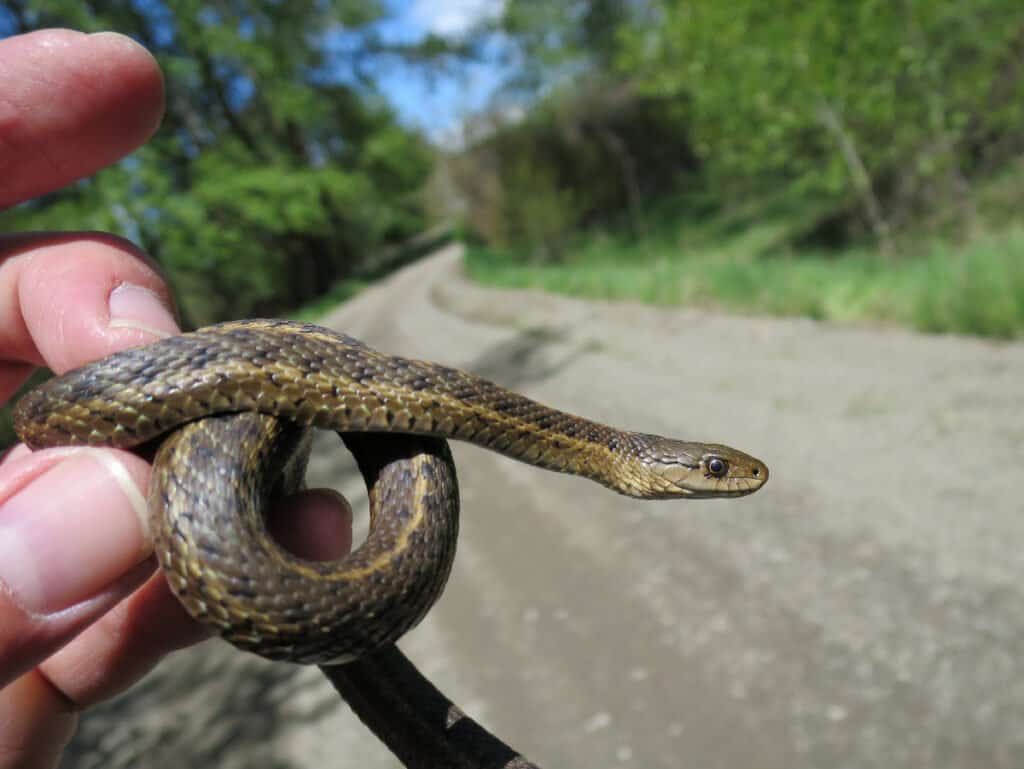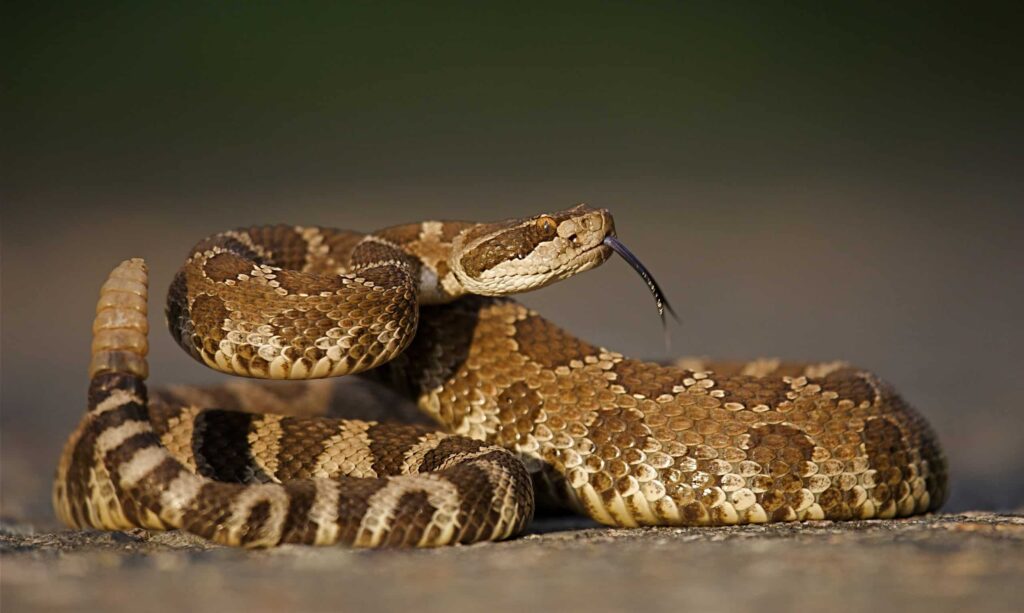Oregon is abundant in water. It may even be renowned for it. The state boasts over 300 miles of coastline, 1,400 lakes, and 100,000 miles of rivers, creeks, and streams. And about 25% of its border is covered in forests. So, it’s safe to say that Oregon has no trouble supporting diverse plants and animals, including snakes. There are 15 snake species that inhabit the wet, forested terrain of Oregon. But do any of them swim in the water? Discover the two water snakes lurking in Oregon waters, including other common snakes in the region.
Are There Water Snakes Lurking in Oregon Waters?
Technically, Oregon does not contain any true water snakes. True water snakes belong to the Nerodia genus, and they are nonvenomous colubrid snakes. However, the state does have two species of semi-aquatic snakes that spend time on land and in the water. They are typically located in moist environments, such as marshes and lakes.
While these two semi-aquatic snakes are not venomous toward humans, they can still bite when they feel threatened and cause mild irritation.
Pacific Coast Aquatic Garter Snake

The aquatic garter snake prefer to live in wet meadows and forests near ponds, lakes, or streams.
©yhelfman/Shutterstock.com
This garter snake is brown or gray with yellow stripes running down its body. It can also appear checkered or barred, depending on the individual snake. On average, the Pacific Coast aquatic garter snake is 1.5 to 2.75 feet long.
This semi-aquatic species can either be found in the water or nearby on logs, rocks, or vegetation. And they prefer to live in wet meadows and forests near ponds, lakes, or streams. You can also find them in marshes or any area along rivers or other kinds of bodies of water. They will often dive into deep parts of water when startled. You can spot this snake primarily in Southwest Oregon.
Western Terrestrial Garter Snake

Western terrestrial garter snakes prefer slow-moving or stagnant water, such as ponds and streams.
©Randy Bjorklund/Shutterstock.com
The western terrestrial garter snake is brown or black with yellow stripes and checkered patterns. And they look similar to the Pacific Coast species. But this snake can get longer, growing up to 3.5 feet.
Unlike the other semi-aquatic Oregon snake that lives around most bodies of water, the western terrestrial prefers slow-moving or stagnant water, such as ponds and streams. And they hide in burrows away from predators during the day. This snake has three subspecies, and they are found throughout most of the state, except the northern regions and the central coastal areas. You can even find them near the Cascade Mountains.
Does Oregon Have Poisonous Snakes?

Northern Pacific
rattlesnakes
are one of three venomous and medically significant snakes in Oregon.
©Tom Reichner/Shutterstock.com
Yes! Oregon has three — of course, they were once classified as subspecies of the western rattlesnake. However, recent research moved them into their own species.
The prairie rattlesnake (C. viridis) is in the eastern regions of the state. In the southeast, you’ll find Great Basin rattlesnakes (C. lutosis), and finally in the central to western areas, the Northern Pacific rattlesnake (C. oreganus) holds sway.
These rattlesnakes are distinguished by their wide, triangular heads and vertical pupils. And of course, it’s recognized from other snakes in the state by its famous rattle at the end of its tail. Despite their deadly venom, rattlesnakes are not known for being aggressive. They only bite unless they feel threatened. And they live in many habitats, from chaparral to open forests.
What is the Largest Snake in Oregon?
These rattlesnake is also the largest snake in Oregon, growing up to four feet long, with some reports topping six feet. However, their normal length is just over three feet, which is still significant. These venomous snakes live in Oregon’s valleys, mountains, and oak habitats. It is the state’s only naturally occurring rattlesnake and medically significant snake to humans. Between the two subspecies, they are found throughout many regions of Oregon.
Most Common Snakes in Oregon

All garter snakes have keeled scales, which means they have a ridge down the center.
©iStock.com/Wildnerdpix
Garter snakes are the most common type of snake in Oregon, which includes the western terrestrial garter snake. The common garter snake is the most widely distributed in the state. These snakes can cross paths with semi-aquatic snakes because they can be found near ponds and stream edges. But you will also find them in shrublands, grasslands, forests, backyards, and rocky hills.
Some other snake species in Oregon include rubber boas, racers, sharptails, ringnecks, night snakes, kingsnakes, whipsnakes, gopher snakes, and ground snakes.
A couple of rare species recorded in the state are the long-nosed snake and some coral snake species. And the night snake is rarely seen, though it’s not really rare. They are nocturnal creatures that rarely make themselves known.
The photo featured at the top of this post is © yhelfman/Shutterstock.com
Discover the "Monster" Snake 5X Bigger than an Anaconda
Every day A-Z Animals sends out some of the most incredible facts in the world from our free newsletter. Want to discover the 10 most beautiful snakes in the world, a "snake island" where you're never more than 3 feet from danger, or a "monster" snake 5X larger than an anaconda? Then sign up right now and you'll start receiving our daily newsletter absolutely free.
Thank you for reading! Have some feedback for us? Contact the AZ Animals editorial team.






